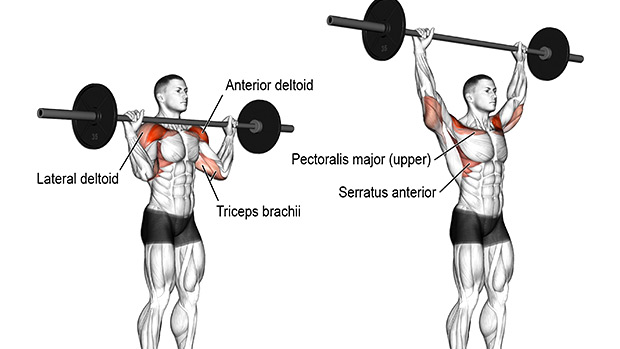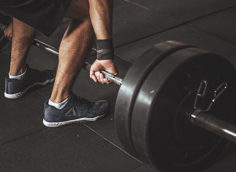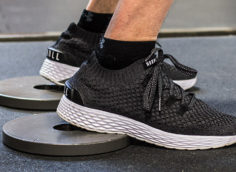It seems like every experienced lifter today has some level of shoulder pain. To get around it, they do machine presses and landmine presses. These exercises are great for strengthening the deltoids while your shoulders are achy, but they don't exactly address the root issues.
Most people can't do a full pain-free overhead press with good form because they have mobility restrictions and faulty pressing mechanics. Not addressing these issues now will haunt you later.
The Assessment
The first step is to perform a basic assessment. Simply lie on the ground with your feet against the wall a few inches off the ground. Hold a kettlebell with both hands, brace your abs, and slowly lower the kettlebell overhead.
The weight of the kettlebell isn't important. The key is to see if you're able to keep your back flat while reaching all the way back.
If you weren't able to complete this assessment, had compensations in form, or felt pain/discomfort, your overhead pressing abilities are off. Let's fix that.
The 4-Pronged Approach
Each exercise below will address a separate common issue limiting your overhead pressing. The four areas we'll be improving are:
- Thoracic spine mobility
- Lat flexibility
- Shoulder mobility without compensation from the lumbar spine
- Mid-back activation and strength
Do each exercise in order for about 30-60 seconds at a time.
1. Improving Thoracic Spine Mobility
This is a very common and easy drill, but breathing is often overlooked. At the bottom, be sure to take slow deep breaths.
2. Improving Lat Flexibility
Do this lat stretch in any rack or Smith machine. The side that's being stretched will have that hand supinated while the other side is either pronated or resting on your knee. Go slow, this stretch is pretty gnarly.
3. Improving Shoulder Mobility
Improving shoulder mobility usually comes at the expense of excessively arching the lumbar spine. This isn't a good habit because it promotes faulty pressing mechanics.
A good hip hinge doesn't involve movement from the low back, and overhead mobility is the same. You should be able to do it without help from other structures.
My favorite drill for this is the dowel dislocate performed on an incline bench. The dowel is better than a band because a band can stretch and allow for compensation. Doing it on an incline bench will lock your lower spine down while you unlock mobility in the shoulders.
Keep your elbows straight and move slowly. Take a wider grip if you're unable to go all the way back. Take a narrower grip if it feels too easy.
4. Strengthening the Mid-Back
The muscles in your mid-trap and rhomboid area help with scapular movement and keep your back stable during overhead pressing. With the new ranges of motion you unlocked, training these muscles will help you strengthen those areas as well as keep your overhead press more stable.
Do angled kettlebell presses. Go slowly and think about upwardly rotating your scapula. You should feel your shoulder blades glide during this movement.
Programming
Do all four of these exercises daily as part of your warm-up and reassess after each week. Once you're able to overhead press pain-free, you don't have to do them as often.





